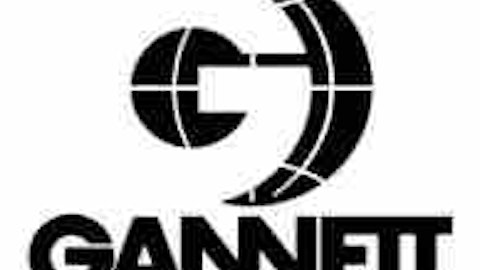Although the race to reach $1,000 is now between Google Inc (NASDAQ:GOOG) and Priceline.com Inc (NASDAQ:PCLN), and up until last year included Apple Inc. (NASDAQ:AAPL), it’s relatively unknown that one of the major newspaper companies reached $980 back in 2004. But with the rise of technology and digital news, how the mighty hath fallen; the stock now trades with a price tag of $530.

Newspapers only accounted for 2% of EBITDA in 2012. Its education segment makes up 28% of EBITDA, and includes Kaplan’s various educational segments, higher education, test prep and secondary education. Its real EBITDA generator is cable, accounting for 44% of EBITDA. This includes various cable and Internet subscription services. Broadcast TV is 32% of EBITDA and includes various television stations.
The media company posted 1Q EPS of $3.46, which was up drastically from the $1.18 posted in the same quarter last year, thanks to growth in cable and broadcasting. Revenue is expected to be up close to 1% in 2013, after falling 2.7% in 2012.
One of the key drivers should be Kaplan, which has been in decline for the past two years, due to a rough economic environment. However, with rising employment and discretionary income, I think people will loosen their purse strings to buy test-prep materials and enroll in secondary education courses.
Other newspapers?
The New York Times Company (NYSE:NYT) runs the The New York Times and The Boston Globe. The New York Times Company (NYSE:NYT) has the largest weekday and Sunday circulation of the major U.S. newspapers. The Times has an average circulation of over 1.6 million people for weekdays and 2.1 million on Sunday.
Like many of the conventional newspaper giants, The New York Times Company (NYSE:NYT) is looking to diversify its revenue. For 2012, advertising made up 45% of revenue, with circulation and other revenue making up the remainder.
The New York Times Company (NYSE:NYT) is also unloading some non-core assets. This includes the sales of Regional Media Group, About Group, and indeed.com. Another big asset it hopes to unload includes The Boston Globe.
The company is also shifting toward more paid access for its products. Currently, online visitors can only access 10 articles per month before having to pay. The company is seeing a rise in circulation revenue, where in the 1Q, it was up 6.5% year-over-year after a 16% rise in the 4Q of 2012. The company expects circulation revenue to be up in the mid-single digits for 2Q.
Gannett Co., Inc. (NYSE:GCI) has 100-daily U.S. newspapers and more than 500 non-daily publications in the U.S. and U.K. titles, while also operating 23 TV stations in the U.S.
The biggest news of late for Gannett Co., Inc. (NYSE:GCI) is its $2.2 billion acquisition of Belo. The deal is expected to be accretive to EPS by $0.50 for the first year and provide synergies of $175 million.
Despite conventional moves, where the acquiree’s price generally falls, Gannett Co., Inc. (NYSE:GCI)’s stock price soared back in June on its announcement of the Belo acquisition. The acquisition is expected to help the company transition away from newspapers to broadcasting.
Like The Washington Post Company (NYSE:WPO), Gannet has been effective in moving away from publishing. Over the last five years, publishing EBITDA as a percentage of total EBITDA has fallen from 82% to 45%, and broadcasting jumped from 17% to 41%. Gannet also owns CareerBuilder, which should continue to show solid growth as the rebound in hiring continues.


